“I was very familiar with controversy. I thought that would be an advantage. It wasn’t.”
John Rector, former OJJDP administrator
“I was naïve about a lot of things. I didn’t know the climate I was getting into.”
Robert Sweet Jr., former OJJDP administrator
“It was a very rewarding experience.”
Verne Speirs, former OJJDP administrator
Yes, they all had the same job: running the Justice Department’s Office of Juvenile Justice and Delinquency Prevention (OJJDP). Their comments came as they and three other former administrators ruminated recently about their tenures, which they plan to do again this month in an unprecedented gathering for the juvenile justice field.
It’s a timely exercise, as President Barack Obama prepares to nominate the next head of OJJDP (It might be a judge from Georgia; see JJ Today at https://youthtoday.org.) After all, half of agency’s eight administrators over its 35 years – Rector, Sweet, Alfred S. Regnery and J. Robert Flores – had terms that could be called tumultuous or trying. The other four – Speirs, Milton Luger (deceased), Ira Schwartz and Shay Bilchik – enjoyed comparatively calm times.
Listening to them reveals, among other things, specific factors behind their different experiences in the office – for example, their professional backgrounds and management styles, their outlook and mission when they joined OJJDP, the state of juvenile justice reform around the country at the time, and political forces in Washington.
Perhaps most crucial is how they handled this prime aspect of the job: The OJJDP administrator must work with several constituencies, and keeping them all content is extremely difficult. Those constituencies include the juvenile justice field (such as practitioners, advocates and researchers), state juvenile justice agencies, the OJJDP staff, members of Congress, and higher-ups in DOJ.
What follows is a sampling of what the former administrators say about how they ran OJJDP and dealt with those constituents. More extensive comments from each participating administrator are on a special website, http://www.youthtodayexchange.org.
Advocacy – For What?
Asked what they want in an OJJDP administrator, juvenile justice practitioners and watchdogs put passionate advocacy for juvenile justice reform at the top of the list. But what kind of advocate does the field want? The first three administrators – Luger, Rector and Schwartz – were reformers in the liberal sense of the word. Luger said this to Congress about the sorry state of juvenile justice systems across the country:
With the exception of a relatively few youths it is probably better for all concerned if young delinquents were not detected, apprehended or institutionalized. Too many get worse in our care.
Then came Regnery, appointed by President Ronald Reagan, and the traditional juvenile justice field spent three years gnashing its teeth. Regnery said this in a speech to judges:
One of my predecessors in this office stated that he believed that such damage was done to juvenile offenders by their contact with the juvenile justice system that society would be better off if the offenders were never apprehended. That kind of thinking epitomizes the intellectual bankruptcy that exists among many of the defenders of this system.
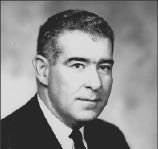 |
|
Milton Luger, 1975-1976 |
Under Regnery and under Robert Sweet Jr., who was appointed by President George H.W. Bush, the focus shifted from prevention and diversion to law-and-order crackdowns on serious offenders. Says Sweet of the Bush administration’s Justice Department:
Prevention was not in their priorities at all. It was law enforcement.
Sweet was followed by Shay Bilchik in the Clinton administration, and the pendulum swung back toward liberal. Laurie Robinson, then an assistant attorney general (and now awaiting confirmation as head of the Office of Justice Programs), says of Attorney General Janet Reno:
She used to say, ‘I really like the fact that prevention is part of the name of OJJDP.’
 |
|
John Rector, 1977-1979 |
Relationship with Staff
Many of the staffers at OJJDP have spent their careers working in juvenile justice, and it is they who are largely responsible for helping officials around the country carry out the mandates of the Juvenile Justice and Delinquency Prevention Act (JJDPA), which created the agency in 1974. At least four administrators had severe clashes with some staff members; those clashes tended to stem from the staff’s perception that the administrator didn’t understand juvenile justice, went against the intent of the JJDPA (like awarding grants based on political ideology) or ignored their input.
Says Emily Martin, who worked for every administrator except the last, Flores (who declined to participate in this project):
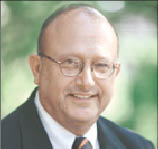 |
|
Ira M. Schwartz, 1979-1981 |
You succeed or fail based on the extent to which our staff supports you.
Sweet, an educator with no experience in juvenile justice but lots in campaigning for Republican presidential candidates, arrived to find a wary staff – among them two top assistants who presented him with a management plan that put them in charge, reducing him to basically a figurehead:
I was not going to be rolled by a couple of bureaucrats that wanted power. I got them transferred out of my office.
Sweet went on to be much-liked by his staff. Two other Republican appointees, Regnery and Flores, so infuriated staffers about how they awarded grants that some employees leaked documents to Congress and the news media. Rector, appointed by a Democratic president, also faced significant staff backlash over his funding decisions, among other issues. The union representing his workers sent Congress a 15-point petition of complaints, accusing him of “questioning the smallest decisions” and “depressing the morale.”
Staff morale has been an issue under several administrators. One factor is that the staff, like the field it covers, leans liberal, which laid the foundation for clashes during some Republican presidential administrations that pursued non-liberal agendas or afforded the office little priority. When Bilchik arrived in 1994, after three Republican presidential administrations, he says many staffers:
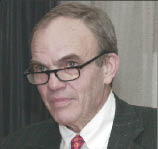 |
|
Alfred S. Regnery, 1983-1986 |
… felt there had been a denigration about what they offered to the administration, and what they could do for the field. The opportunity I had was to show them there would be somebody who would believe in them.”
‘The Field’
The “juvenile justice field” consists of several groups, which include at least practitioners, advocates and researchers. Their relationships with OJJDP are ripe for contention in a way that reflects a positive feature of the field. Regnery observes:
There’s an enormous amount of ideology on the part of the constituency. These people are driven by their ideology. … It’s a religion.
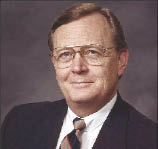 |
|
Verne L. Speirs, 1987-1988 |
Making the relationships even more high-stakes is that OJJDP dispenses money – money that some organizations need to run their programs. One attraction of the top job is the ability to direct the office’s discretionary grants to organizations and its payments to states (which are based on state compliance with the Juvenile Justice and Delinquency Prevention Act, or OJJDPA). Says Schwartz:
It was a large pool of money. The fact that it was discretionary was an advantage. You could use the money for high-priority issues that could affect national policy or have major impact on improving the juvenile justice system.
That money is also the biggest land mine in the office. The administrators have differed significantly in how they decided which grant proposals got funded. Rector, Regnery and Flores directed many or most of the funding decisions themselves. They also had the most contentious relationships with juvenile justice practitioners, who charged that the decisions were based on political ideology or personal connections.
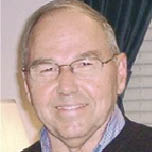 |
|
Robert W. Sweet Jr., 1990-1992 |
Regnery says the fury was based on self-interest:
For every guy who gets money, there are 10 others who didn’t. They’re pissed off.
It wasn’t until the third administrator, Schwartz, that the office established a system of using panels of outside experts to evaluate grant proposals. Schwartz explains:
We brought in people from all different perspectives: prosecutors, judges, JJ advocates. … People were glad to do it.
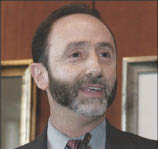 |
|
Shay Bilchik, 1994-2000 |
Seeking such input from the field in a structural way has helped several administrators – especially Speirs, Sweet and Bilchik – to avoid significant conflicts about their funding decisions. Speirs recalls that when he started the job:
We put together a panel, I think it was about 32 practitioners from around the United States. … It was across the board, from courts to correctional institutions. We asked some of them to write short white papers on areas of concern or areas that they felt should be looked at. … We used that as a guide to look as to where would we invest the dollars.
Another part of the field is juvenile judges, who have carried out the reforms of JJDPA in courtrooms around the country and have initiated many local innovations. But right from passage of the act in 1974, a significant number of juvenile judges have resisted some of its provisions, particularly the deinstitutionalization of status offenders. Rector blasted the judges over this issue, and a 1978 report by the U.S. General Accounting Office sided largely with him, finding that:
Some juvenile court judges also believe that correctional facilities are appropriate places in which to put some status offenders.
Then in the 1980 reauthorization of the JJDPA, the National Council of Juvenile and Family Court Judges persuaded Congress to insert language allowing judges to detain status offenders who violate Valid Court Orders (such as not missing school while under jurisdiction of the court) – a move opposed by Schwartz and reformers in the field, even to this day.
Schwartz also clashed with the council over what organizations would be involved in training juvenile court judges with OJJDP funds. Recalls long-time OJJDP staffer John Wilson:
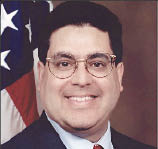 |
|
J. Robert Flores, 2001-2008 |
The judges were a very powerful organization. They had some extremely strong judges who really felt that they could get whatever they wanted from the office. Ira kind of put them in their place.
The States
The administrator’s relationship with state juvenile justice agencies is essential and sensitive, because OJJDP is both an enforcer of the act and a provider of funds based on compliance with the act. Bilchik observes:
You’ve got a formula grants program with certain statutory requirements, and a monitoring function to make sure those requirements are being met, or you hold back the money. It’s ripe for conflict. That was one of the main issues we were dealing with: How do you make that relationship work?
The Coalition for Juvenile Justice issued a report in September saying “the overwhelming majority” of states comply with the act. But enforcement of federal mandates is rarely easy; Rector pushed hard to enforce state compliance in the 1970s, igniting a severe push-back from the states that helped to drive him from office. His successors tried to navigate the relationship in a more low-key manner.
The administrators do that largely by working through the State Planning Agencies and State Advisory Groups (SAGs), relationships that have been both a source of accomplishment and of strain. Schwartz, Speirs and Sweet say their conflicts with SAGs over policy issues and whether OJJDP was paying enough attention to them were a constant sore point. Says Speirs:
The part of the field that I felt had the most strained relations had to do with the state advisory groups.
Nancy Gannon, executive director of the Coalition for Juvenile Justice, which represents the SAGs, sees the relationship between those groups and OJJDP as:
… sometimes having a healthy tension. The SAGs … must surmount political and financial barriers [to implement the act in the states], so they rely on OJJDP [and others] for leadership and resources.
Congress
Like many federal offices, OJJDP has always gotten varying degrees of input from Congress about how to spend its money – from polite requests, to threats, to outright earmarks in the agency’s congressional appropriation. That pressure has changed with the administrators, growing to the point where in the early 2000s, almost all of OJJDP’s discretionary money was tied up in earmarks.
Rector, like most of the administrators, would get calls from members of Congress and staffers pushing for someone in their home states to be funded, or complaining about OJJDP not renewing a grant to a home-state agency:
The people we were dealing with were used to getting their way. ‘What do you mean you cut off the money? I’m going call somebody [in Justice] and your ass is grass.’ I’d say, ‘Call whoever you want to call.’
In addition, Congress has held numerous hearings about OJJDP and the JJDPA: about reauthorizing the act, appropriating funds, confirming administrators, and in the cases of Rector, Regnery and Flores, looking into allegations about how the office was run.
Congressional interest was probably highest during the tenures of Rector, Regnery and Bilchik, because of news reports about juvenile crime. The Columbine High School massacre occurred during the administration of Bilchik, who recalls that the office worked to stay focused on what it thought should be done despite the storm outside:
I remember it being a stressful time. We were getting calls from the Hill, calls from the White House. ‘What are you going to do about this?’
Justice Department and White House
There was conflict from the start. The first acting administrator, Fred Nader, and the first full-time administrator, Luger, had trouble getting their higher-ups at Justice to provide staff or approve grants. Martin, the veteran OJJDP staffer, recalls:
We were kind of like a burden to be suffered. … [Prevention] was a very strange animal to them. They objected to us doing it.
Rector accused Justice Department officials, before the Senate Judiciary Committee, of “administrative sabotage.” Sweet and Flores clashed with Justice officials who shot down their grant decisions and made their own choices for OJJDP funding. Sweet recalls:
I was in this constant battle.
On the other hand, several administrators have been largely in sync with their higher-ups at Justice, which helped them accomplish their objectives and weather complaints. Robinson, the assistant attorney general under Clinton, recalls that because of Attorney General Reno’s support of OJJDP:
At Justice, there was this cache that had never been there before. Nobody had really cared about OJJDP. It gave it [OJJDP] a great deal more weight and importance.
And even though Regnery was under fire from much of the juvenile justice field, the news media and Congress for his funding decisions, the Reagan administration did not pressure him to step down to take off the heat. Among the reasons, says Edwin Meese, who was a top White House adviser and attorney general during those years:
The people who were all over him were not necessarily the people who were supportive of Ronald Reagan. So that didn’t bother me.































